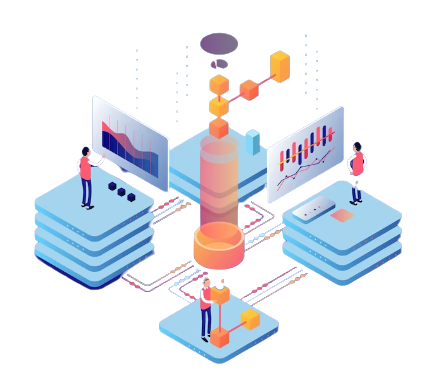As IoT continues to grow and become more prevalent in our daily lives, the role of data analytics will only become more critical. By leveraging the power of data analytics, organizations can harness the full potential of IoT and drive innovation and growth in their businesses.
Data analytics has become increasingly important in the world of IoT, as it provides organizations with insights that help them optimize their operations, make better decisions, and ultimately, gain a competitive advantage. However, implementing data analytics in an IoT environment also comes with its own set of challenges. In this blog post, we’ll explore the role of data analytics in IoT, the opportunities it presents, and the challenges that must be addressed.
Introduction
IoT devices generate a vast amount of data every day, and as a result, the ability to analyze and make sense of this data is becoming critical to the success of businesses. Data analytics is the process of examining large data sets to uncover patterns, correlations, and insights that can be used to make better decisions. In the context of IoT, data analytics is essential for extracting value from the data generated by connected devices.
The Role of Data Analytics in IoT
Data analytics plays a vital role in IoT by providing insights that help organizations optimize their operations, reduce costs, and improve customer experiences. By analyzing the data generated by IoT devices, businesses can gain a better understanding of their customers ‘ needs and preferences, as well as their operations. This can help them identify areas for improvement and make data-driven decisions that ultimately benefit the business.

For example, a retail company might use data analytics to monitor customer behavior in its stores, such as the products they browse, the items they purchase, and the time of day they shop. By analyzing this data, the company can gain insights into customer preferences and optimize store layouts and product placements to improve the customer experience and increase sales.
Opportunities Presented by Data Analytics in IoT
Data analytics presents several opportunities for businesses operating in the IoT space. Here are a few examples:
-
Improved Customer Experiences
By analyzing customer data generated by IoT devices, businesses can gain a better understanding of their customer’s preferences and behavior. This insight can help companies tailor their products and services to better meet customer needs, ultimately improving the customer experience.
-
Predictive Maintenance
One of the most significant advantages is its ability to enable predictive maintenance. By analyzing data from connected devices, organizations can predict when equipment is likely to fail and perform maintenance proactively, minimizing downtime and reducing costs.
-
Optimized Operations
Data analytics also enables organizations to optimize their operations. By analyzing data generated by IoT devices, businesses can identify inefficiencies and bottlenecks in their processes. Allowing them to make data-driven decisions to improve productivity and reduce costs.
Challenges of Data Analytics in IoT
While It presents significant opportunities, some challenges must be addressed. Here are a few examples:
-
Data Security
Data security is a significant concern in the world of IoT. With so many connected devices generating vast amounts of data, there is a risk that sensitive information could fall into the wrong hands. Organizations must take steps to ensure that data is secure throughout the data lifecycle.
-
Data Quality
Another challenge is ensuring the quality of the data generated by IoT devices. With so much data being generated, there is a risk of inaccuracies or inconsistencies, which can lead to flawed insights and decisions. It is essential to implement data validation and cleaning procedures to ensure the accuracy and consistency of data.
-
Data Governance
Data governance is another challenge that must be addressed when implementing it. Organizations must establish policies and procedures for data management, including data collection, storage, and use. This includes defining roles and responsibilities for data management. And ensuring that data is used ethically and in compliance with regulations.
Conclusion
Data analytics plays a critical role in IoT by providing insights that help organizations optimize their operations, reduce costs, and improve customer experiences. By analyzing the vast amounts of data generated by IoT devices, companies can make data-driven decisions and gain a competitive advantage.
However, It also presents its own set of challenges. Companies must ensure that they have the right infrastructure and technology to handle the massive amounts of data generated by IoT devices. They must also address the issue of data security and privacy to ensure that customer data is protected.
To overcome these challenges, companies must invest in the right data analytics tools and platforms. As well as hire skilled data analysts who can make sense of the data generated by IoT devices. They must also prioritize data security and privacy by implementing robust data protection measures. And complying with regulations such as GDPR.
Unlock the potential of IoT with Tanbits data analytics services. As IoT expands its presence in our lives, data analytics becomes vital for businesses to drive innovation and growth. Discover how we can help your organization make the most of IoT with our cutting-edge services.
BACK










